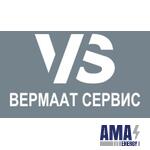Heat Treatment Equipment
Welded joints made by arc methods immediately after the process are characterized by heterogeneity of the structure and properties of the weld, heat affected zone, and also by the presence of welding stresses in them.
The heterogeneous structure and properties depend mainly on the uneven heating of the metal during welding. A metal region appears along the weld, which during welding is heated to a very high temperature, and then cooled to room temperature. This area is called the heat affected zone (HAZ).
All metals are compressed at lower temperatures. This process in the welding area is hindered by the surrounding cold metal layers and, as a result, residual welding stresses arise in the weld area and in the HAZ. Welding stresses can reach significant values close to the yield strength (250-350 MPa).
At high residual stresses in the presence of certain chemicals, a special type of fracture, corrosion cracking, can occur. For example, very low chloride concentrations can seriously affect normally stable stainless steels.
If there is water in the weld zone, it may fall under an electric arc. Under the influence of electricity, water will be decomposed into oxygen and hydrogen, which, in turn, will fall into the melt. The presence of hydrogen can cause serious welding problems. Water may be present as vapors in gases used in gas welding. Since electrodes and other components are present throughout the entire welding time, the moisture problem remains urgent all the time. In some cases, hydrogen can form through pores in the weld when it is cooled. But the hydrogen atoms are very small and can easily stand out from the metal. This process is called hydrogen diffusion. At high temperatures, diffusion is rather fast, at low temperatures it is slower. An increase in the temperature of the metal makes the removal of hydrogen more efficient.
One of the main means of solving these problems and improving the reliability of welded joints is heating or heat treatment, which reduces the level of welding stresses, improves the structure and properties of the metal of the compound, removes hydrogen.

